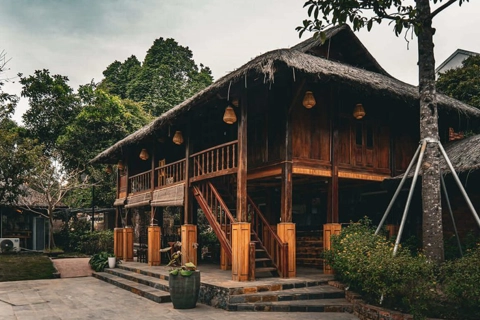Travel
Hanoi to reopen six sealed vaults in Gam Cau street
Jun 12, 2018 / 04:20 PM
The six sealed vaults in Gam Cau street, Hanoi will be reopened this September in an effort to broaden public space for locals.
The information was announced in a recent meeting of the Hanoi People’s Council. Accordingly, Hanoi authority has decided to reopen six sealed vaults in Gam Cau street to expand the pedestrian zone and an art space for locals. The move, along with the mural paintings, would offer a vivid public art space for the Hanoians.
In 2017, the city refaced the street by reconverting more than 100 vaults into art galleries. of the vaults, Vietnamese and South Korean artists worked together to cover the walls of the railway viaduct on Phung Hung street with 19 murals.
The railroad viaduct, which starts from Phung Hung - Tran Phu crossroads to the Long Bien Train Station and passes through the Phung Hung and Gam Cau streets, is 1.2km long, with a slope steepness of zero to six metres, under which there are a total of 131 vaults. Among them, only four vaults are open, and the remaining are sealed with cement.
The vaults, built in 1900 and finished in 1902, are 3.5m to 4.5m high and cover about 16sq.m area each. The viaduct is part of the historic Long Biên Bridge, which carries the rail connecting Hanoi with neighboring localities.
The bridge spans three centuries and is considered an important and central part of Hanoi's development, as well as history. The steel structure was there when French troops left Hanoi, and even when the city welcomed Vietnamese soldiers to take over it in 1954.

Hanoi to reopen six sealed vaults in Gam Cau street.
|
The railroad viaduct, which starts from Phung Hung - Tran Phu crossroads to the Long Bien Train Station and passes through the Phung Hung and Gam Cau streets, is 1.2km long, with a slope steepness of zero to six metres, under which there are a total of 131 vaults. Among them, only four vaults are open, and the remaining are sealed with cement.
The vaults, built in 1900 and finished in 1902, are 3.5m to 4.5m high and cover about 16sq.m area each. The viaduct is part of the historic Long Biên Bridge, which carries the rail connecting Hanoi with neighboring localities.
The bridge spans three centuries and is considered an important and central part of Hanoi's development, as well as history. The steel structure was there when French troops left Hanoi, and even when the city welcomed Vietnamese soldiers to take over it in 1954.








